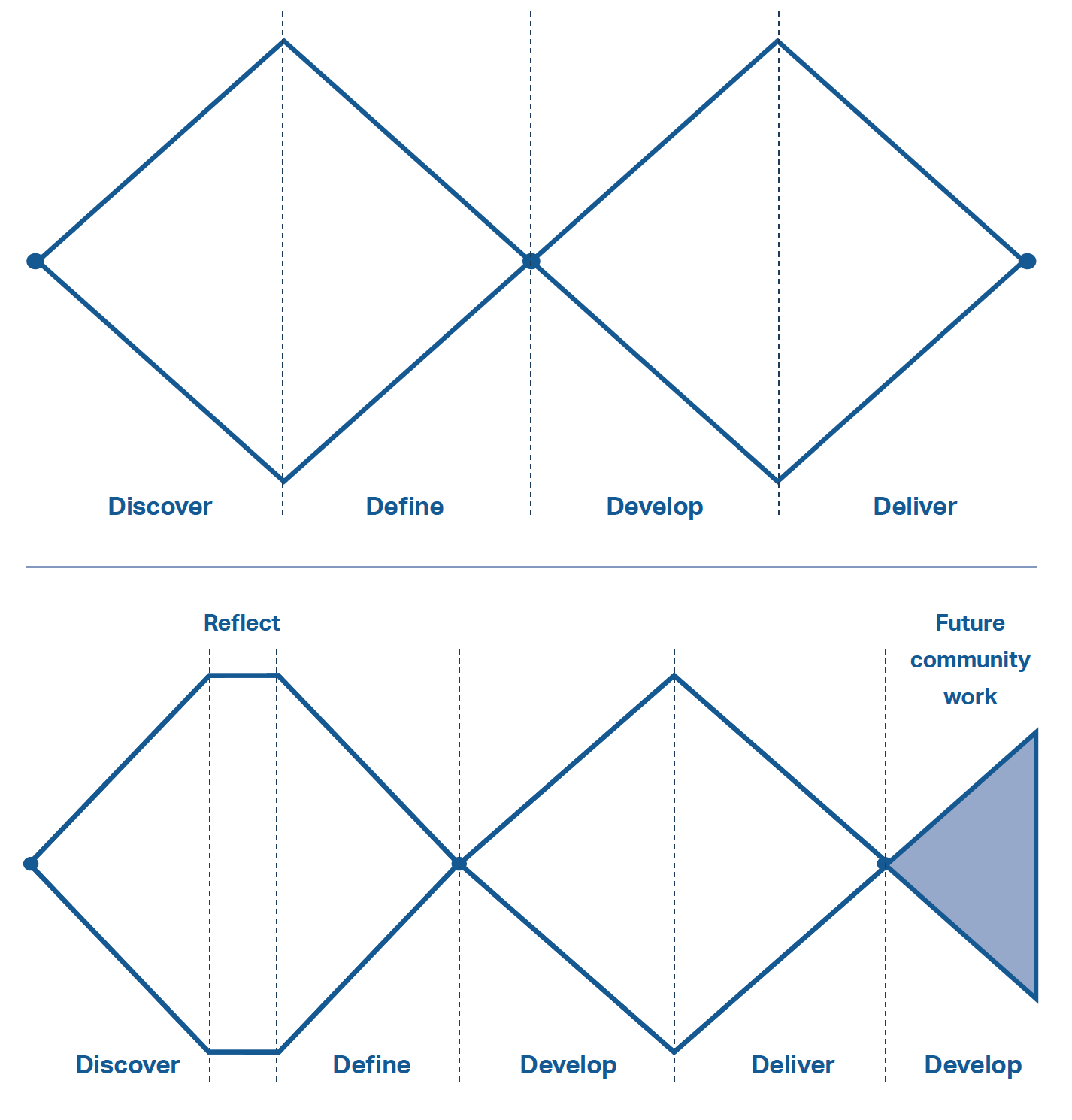Human-centred design
What is Human-Centred Design?
Human-Centred Design is a unique approach to problem solving and is grounded in understanding the needs and insights of the people that the designer is designing for. Empathising with people can help to reveal the underlying problems affecting their communities or the situation that an individual may inhabit. This provides the opportunity for designers exercising a Human-Centred approach to drive creative thinking and offer innovative proposals relative to the situation being considered. The core value of Human-Centred Design recognises that:
The people who face those problems everyday are the ones who hold the key to the answer
IDEO (2015) recommend that by focussing on what a designer may learn from individuals and asking them the right questions will enable them, to more likely arrive at a suitable proposal together. Human-Centred Design is not a one size fits all process, nor is it perfectly linear.
Each project brings different perspectives, context and knowledge that in turn navigates its own contours and character. IDEO call this process ‘diverging and converging’ which is a very similar concept to Design Council’s (n.d.) ‘Double Diamond’ design process model.
Methodology
The ‘Double Diamond’ model is the method I used to inform my design process (see Figure 9). However as mentioned above the process was not straightforward and at times challenged my decision making (see Figure 10). In Figure 10 I mapped my own process alongside the ‘Double Diamond’ method and highlighted areas of reflection where my design process changed its course. My decisions were influenced by the need to better understand my audience by taking the time to build relationships and connections with them.

Figure 9 (top): Design Council ‘Double diamond’
Figure 10 (Bottom): Harmony’s design process
This methodology has kept me grounded in believing that what I have heard and observed from my own people will guide me to arrive at solutions that meet my community’s needs. The model has four phases, Discover, Define, Develop and Deliver. The model shows how the design process diverges where thinking and possibilities are broad to converging and focussing on distinct objects (Design Council, n.d.). Below is a breakdown of these four phases:
Discover
The first part of the model is a period of discovery that encourages designers to look at the world from a new perspective, seek information and gather insights. The exploration involves empathising with people and can utilise both qualitative
and quantitative research methods. Gathering data and insights builds a rich bank of knowledge that will inform the rest of the design process.
Define
During this phase the model converges, synthesising all of the possible opportunities and design ideas generated in the discovery phase. The aim is to filter through the mass of ideas by analysing them into a reduced set of problem statements, personas and pain-points that frames the design challenge.
Develop
One of the qualities that sets Human-Centred Designers apart is the belief that there will always be more ideas. Develop is the phase where designers have the opportunity to think big, prototype and test. This is often a generative process of discarding bad ideas and nurturing the gems to refine a solution for the people you are designing for.
Deliver
In this phase the design concept is finalised and sent out into the world. This is an important time to consider capturing feedback. This is also an important time to feed back lessons learnt with the people you are designing for.
